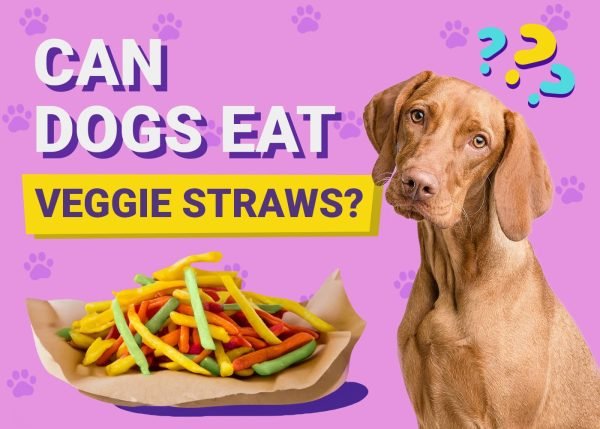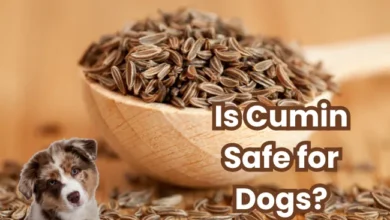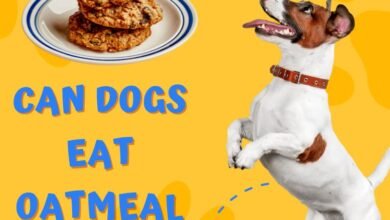Can Dogs Snack on Veggie Straws? Here’s the Answer

Veggie straws have become a beloved snack choice among health-conscious individuals seeking a flavorful alternative to traditional potato chips. These snacks are renowned for their crunchy texture and vibrant appearance, often coming in various colors derived from vegetable powders like tomato, spinach, and beetroot. The base of veggie straws is typically potato starch, which provides the satisfying crunch that snack enthusiasts enjoy.
To enhance taste and texture, veggie straws are cooked in oils such as sunflower or canola oil, which not only contribute to their crispy consistency but also add a savory flavor. Additionally, a touch of salt is commonly added to enhance the overall taste experience.
From a nutritional standpoint, veggie straws are often perceived as a lighter option compared to regular potato chips, boasting a lower calorie count. However, it’s important to note that while they may be lower in calories, they can still contain significant levels of sodium and fats, depending on the brand and serving size.
Typically, a serving of veggie straws is measured by weight or by volume, with recommended portion sizes varying by manufacturer. Understanding the nutritional profile and serving recommendations can help consumers make informed choices about incorporating veggie straws into their snacking habits.
In this article, we explore the appeal of veggie straws as a popular snack, their key ingredients, and the nutritional aspects that consumers should consider. By providing insight into what veggie straws are made of and their dietary implications, we aim to equip readers with the knowledge needed to make healthier snack choices.So let’s explore that can dogs eat Veggie Straws?
Are Veggie Straws Safe for Dogs?
Before offering Veggie Straws or any human snack to your dog, it’s important to consider potential risks and safety concerns associated with their consumption.
1. Potential Risks:
High Salt Content:
- Risk Factor: Veggie Straws can contain high levels of salt, which can be harmful to dogs.
- Effects: Excessive salt intake can lead to sodium ion poisoning in dogs, causing symptoms such as excessive thirst, vomiting, diarrhea, and potentially seizures.
- Precaution: Dogs have lower tolerance for salt compared to humans. It’s advisable to avoid feeding Veggie Straws to dogs due to their high salt content.
Artificial Additives:
- Concerns: Veggie Straws may contain artificial flavors, colors, and preservatives.
- Potential Issues: These additives can trigger allergies or sensitivities in some dogs, leading to skin irritations, gastrointestinal upset, or respiratory problems.
- Precaution: Opt for treats specifically formulated for dogs or natural alternatives to minimize the risk of adverse reactions from artificial additives.
2. Choking Hazards:
Texture and Shape:
- Risk Factor: The crunchy texture and cylindrical shape of Veggie Straws can pose a choking hazard, especially for small dogs or those prone to swallowing without adequate chewing.
- Precaution: Monitor your dog closely if offering snacks with similar textures to prevent choking incidents.
3. Comparison to Other Human Snacks in Terms of Safety for Dogs:
General Considerations:
- Human Snacks vs. Dog-Specific Treats: Many human snacks, including Veggie Straws, are not formulated with a dog’s nutritional needs or digestive system in mind.
- Ingredients: Some ingredients in human snacks, such as onions, garlic, chocolate, or high levels of salt, can be toxic to dogs.
- Safety Concerns: Human snacks often contain additives and seasonings that may not agree with a dog’s sensitive digestive system or could lead to long-term health issues.
While Veggie Straws may seem like a healthier option compared to traditional potato chips, they still pose significant risks to dogs due to their high salt content, potential for choking, and presence of artificial additives. To ensure your dog’s safety and well-being, it’s best to opt for treats specifically formulated for dogs or offer natural, dog-safe alternatives like fruits and vegetables. Always consult with your veterinarian before introducing any new snacks or foods into your dog’s diet to ensure they are safe and suitable for your pet.
Health Risks of Veggie Straws for Dogs
Feeding Veggie Straws to dogs can pose several health risks due to their ingredients and nutritional composition. It’s crucial to be aware of these potential issues to safeguard your dog’s well-being.
1. Digestive Issues:
- Upset Stomach: The oils and starches in Veggie Straws can lead to digestive upset in dogs, causing discomfort and potentially leading to vomiting or diarrhea.
- Diarrhea: Consumption of Veggie Straws may result in loose stools or diarrhea, especially if your dog has a sensitive stomach.
- Gas: Ingredients in Veggie Straws can contribute to increased gas production in dogs, causing bloating and discomfort.
2. Long-Term Health Risks:
- Obesity: Veggie Straws, like many processed snacks, are high in fat and calories. Regular consumption without proper portion control can contribute to weight gain and obesity in dogs.
- Pancreatitis: The fatty nature of Veggie Straws can potentially trigger inflammation of the pancreas, leading to pancreatitis, a painful and serious condition that requires veterinary attention.
- Hypertension (High Blood Pressure): High salt content in Veggie Straws can contribute to hypertension in dogs, increasing the risk of cardiovascular issues over time.
3. Allergic Reactions to Specific Ingredients:
- Potential Allergens: Veggie Straws may contain ingredients such as artificial flavors, colors, or specific vegetable components that can trigger allergic reactions in some dogs.
- Symptoms: Allergic reactions may manifest as skin irritations (itching, redness), gastrointestinal upset (vomiting, diarrhea), or respiratory issues (coughing, sneezing).
To minimize health risks, it’s advisable to avoid feeding Veggie Straws or similar processed snacks to dogs. Instead, opt for healthier alternatives such as natural, dog-safe vegetables and fruits. These alternatives provide essential nutrients without the risks associated with high fat content, salt, artificial additives, or digestive disturbances. Always consult with your veterinarian for advice on suitable treats and nutrition tailored to your dog’s individual needs and dietary requirements. By making informed choices, you can help maintain your dog’s health and ensure they enjoy a balanced diet that supports their overall well-being.
Recognizing Signs of Overconsumption in Dogs
It’s important to be able to recognize signs of overconsumption in dogs to prevent health issues associated with excessive intake of certain foods or treats. Here are key signs to watch for and immediate steps to take if your dog shows adverse reactions:
1. Symptoms of Salt Toxicity:
- Excessive Thirst: Your dog may drink water excessively, more than usual.
- Vomiting: They may vomit, which can occur as their body attempts to expel toxins.
- Diarrhea: Loose stools or diarrhea may develop as a result of gastrointestinal upset.
- Lethargy: Your dog may appear unusually tired or lethargic, lacking their usual energy levels.
2. Behavioral Signs of Discomfort or Distress:
- Restlessness: Your dog may exhibit restlessness or discomfort, pacing, or inability to settle.
- Refusal to Eat: They may show disinterest in food or refuse to eat altogether.
- Abnormal Behavior: Unusual behaviors such as excessive drooling, licking, or pawing at the mouth can indicate discomfort.
3. Immediate Steps to Take if Your Dog Shows Adverse Reactions:
- Cease Treats or Food: Immediately stop giving your dog the suspected treat or food causing the reaction.
- Remove Access: Ensure your dog cannot access any more of the substance that may be causing the issue.
- Monitor Closely: Keep a close watch on your dog’s symptoms and behavior. Note down any observations to share with your veterinarian.
- Provide Water: Offer fresh water to help flush out toxins and maintain hydration.
- Contact Your Veterinarian: Seek veterinary advice promptly, especially if symptoms persist, worsen, or if you suspect salt toxicity or severe allergic reactions.
Additional Tips:
- Be Prepared: Have your veterinarian’s contact information readily available.
- Record Details: Note down what your dog ate, how much, and when symptoms started.
- Stay Calm: Your dog may sense your anxiety, so remaining calm can help them stay relaxed.
By being vigilant and responsive to signs of overconsumption or adverse reactions, you can take swift action to ensure your dog receives appropriate care and treatment. Always prioritize your dog’s safety and well-being by monitoring their diet and responding promptly to any signs of distress or illness.
Healthy Alternatives to Veggie Straws for Dogs
Ensuring your dog’s snacks are nutritious and safe is crucial for their overall health. Here are some healthier alternatives to Veggie Straws:
1. Dog-Safe Vegetables and Fruits:
Vegetables:
- Carrots (raw or cooked)
- Green beans (cooked or steamed)
- Sweet potatoes (cooked and mashed)
- Broccoli (florets, raw or lightly steamed)
- Zucchini (raw or cooked)
- Cucumber (sliced or diced)
Fruits:
- Apples (without seeds)
- Blueberries
- Strawberries (remove stems)
- Watermelon (seedless and without rind)
- Bananas (in moderation, as they are high in sugar)
- Pineapple (remove outer skin and core)
2. Benefits of Natural, Unprocessed Snacks:
Nutritional Value:
Natural snacks like vegetables and fruits provide essential vitamins (A, C, K) and minerals (potassium, fiber) beneficial for dogs.
They are typically low in calories and fat, making them suitable for treats without contributing to weight gain.
Digestive Health:
Whole foods are easier for dogs to digest compared to processed snacks that may contain additives, fillers, and artificial ingredients.
They can help regulate bowel movements and promote overall gastrointestinal health.
Dental Benefits:
Crunchy vegetables like carrots and green beans can help clean teeth and reduce plaque buildup, supporting dental health.
3. Simple Recipes for Homemade Dog Treats:
Frozen Banana Bites:
- Ingredients: Bananas, peanut butter (xylitol-free)
- Instructions: Slice bananas, spread peanut butter between slices, freeze on parchment paper.
Sweet Potato Chews:
- Ingredients: Sweet potatoes
- Instructions: Slice sweet potatoes into thin strips, bake at low heat until dried (like jerky).
Carrot and Apple Treats:
- Ingredients: Carrots, apples (without seeds), oats
- Instructions: Grate carrots and apples, mix with oats, form into small balls, bake until firm.
Blueberry Frozen Treats:
- Ingredients: Blueberries, plain yogurt (check for lactose-free if sensitive)
- Instructions: Blend blueberries and yogurt, pour into ice cube trays, freeze until solid.
These alternatives provide a variety of flavors and textures that dogs love while promoting their overall health and well-being. When selecting or preparing treats for your dog, consider their individual dietary needs and consult with your veterinarian for personalized recommendations. By choosing natural, whole food options, you can ensure your dog enjoys tasty treats that contribute to their nutritional needs and support their overall happiness and longevity.
Tips for Safely Sharing Snacks with Your Dog
Sharing snacks with your dog can be a rewarding experience, but it’s important to do so safely and responsibly to ensure their health and well-being. Here are some essential tips:
1. Importance of Portion Control and Moderation:
- Moderation: Treats should only constitute a small portion of your dog’s daily caloric intake, ideally no more than 10%.
- Portion Size: Adjust portion sizes based on your dog’s size, age, and activity level to avoid overfeeding.
- Health Impact: Excessive treats can lead to weight gain and other health issues such as obesity and pancreatitis.
2. How to Introduce New Foods Gradually:
- Slow Introduction: Introduce new snacks or foods gradually, especially if your dog has a sensitive stomach or food allergies.
- Small Amounts: Start with a small amount and monitor your dog’s reaction for any signs of digestive upset or allergies.
- Observation: Watch for changes in stool quality, behavior, or any signs of discomfort after introducing new foods.
3. Consulting with a Veterinarian Before Giving Your Dog Human Snacks:
- Nutritional Guidance: Veterinarians can provide guidance on which human snacks are safe and appropriate for dogs.
- Allergies and Sensitivities: They can advise on potential allergens or ingredients that may be harmful to dogs.
- Health Considerations: Discuss your dog’s specific health conditions or dietary needs to ensure the snacks you choose are suitable.
Additional Tips:
- Avoid Harmful Ingredients: Steer clear of snacks containing chocolate, onions, garlic, grapes, raisins, or high levels of salt, as these can be toxic to dogs.
- Monitor Reactions: Always monitor your dog after introducing a new snack. If there are any signs of adverse reactions like vomiting, diarrhea, or allergic symptoms, discontinue the snack immediately and consult your vet.
- Choose Dog-Specific Treats: Opt for treats specifically formulated for dogs, as they are designed to meet their nutritional needs and are less likely to contain harmful ingredients.
By following these tips, you can ensure that sharing snacks with your dog remains a safe and enjoyable experience. Prioritizing their health through mindful feeding practices will contribute to their overall well-being and happiness.




